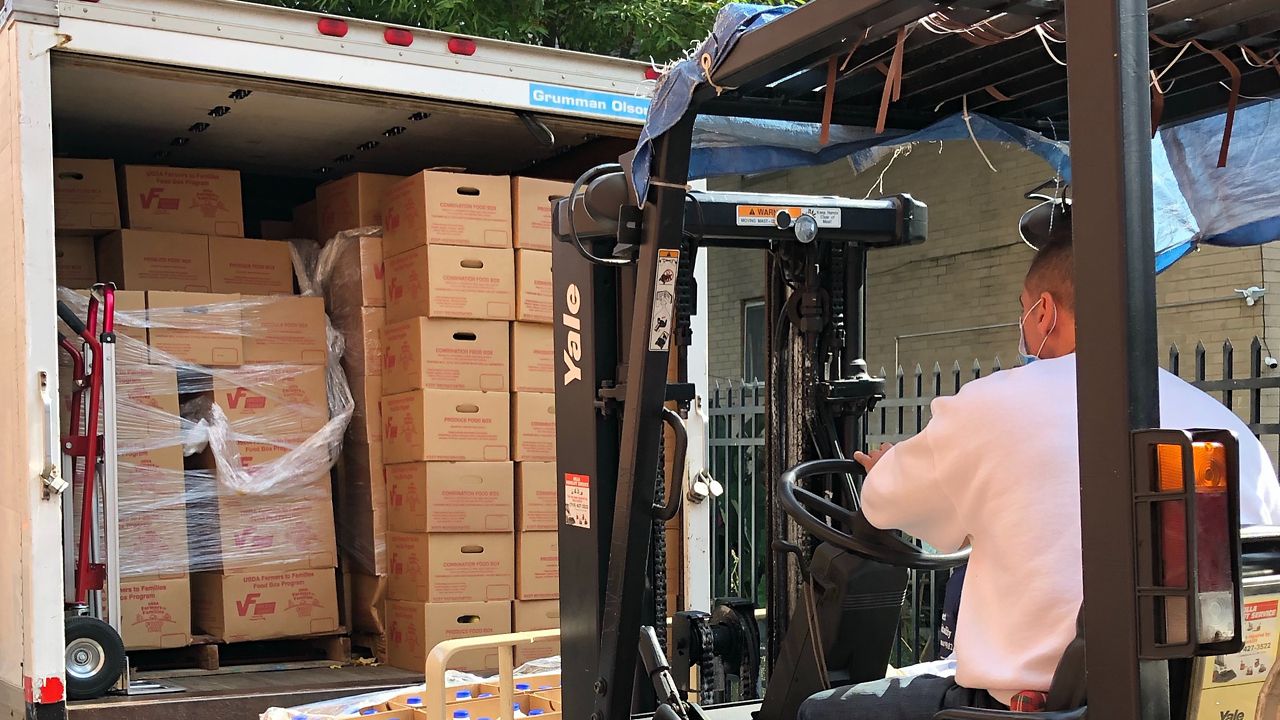Twice a week, large food trucks pull into the parking lot at the Christian Pentecostal Church on Staten Island, loaded up with pallets of food to be distributed to food pantries on Staten Island, Brooklyn and Queens.
Laura Aclan is the food program coordinator, overseeing one of the island's largest food pantries, serving food to more than 1,000 people a week.
"It's very hectic. Everybody likes to get everything," she said.
Aclan has been volunteering here for 30 years.
But she says the last several months have been hard, as the demand for food has soared because of the pandemic.
The only thing she can compare it to is Hurricane Sandy, which damaged or destroyed 4,500 homes on Staten Island and created a need for food assistance that stretched for weeks.
A new study finds the city was not prepared for a food crisis of this magnitude and duration.
Nicholas Freudenberg is a professor at the CUNY School of Public Health.
"Emergency food programs were always intended to be a temporary solution," Freudenberg said. "Especially when the demand has gone up so much, the capacity of that temporary solution to meet the need is even less so. And so I'm concerned that the city has not come up with more sustainable solutions to keep up with the increase in food insecurity."
Still, the study, conducted by Hunter College, City University and the Teachers College at Columbia University, found that city agencies and anti-hunger organizations have managed to expand emergency meal distribution, serving more than 200 million meals from March to August.
Project Hospitality now averages about 2,000 meals a week at storefront and pop-up locations across the borough.
Gloria Novoa is the volunteer coordinator at Project Hospitality.
"Now, it's a whole new demographic of the working class that became the working poor. They were not the working poor in February. And they are today," said Novoa.
According to Feeding America, the nation's largest hunger relief organization, about 11 percent of New Yorkers struggled with putting food on the table back in 2018.
Feeding America says that number is expected to hit 19 percent by the end of this year, and that even when the pandemic ends it will still take a while for the food crisis to end, too.



